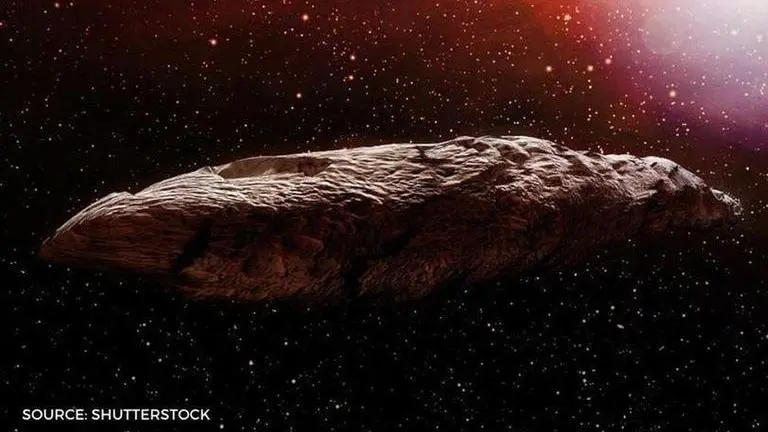Updated 20 August 2020 at 19:48 IST
Interstellar visitor Oumuamua could be a piece of Alien Technology, new study suggests
Interstellar visitor Oumuamua had evoked many questions in the scientific community since it had passed close by Earth in 2018. Find out what this is.
- Science News
- 3 min read

The mysterious celestial traveller Oumuamua is the first known interstellar object to visit our solar system. It was discovered on October 19, 2017, by NASA’s Near-Earth Object Observations Programme. It was originally classified as a comet. However, close observations of this interstellar visitor revealed very few signs of cometary activity. Oumuamua slingshotted past the sun on September 9, 2017, at a blistering speed of 196,000 miles per hour or 87.3 kilometres per second. It was briefly classified as an asteroid too.
Is Oumuamua an Alien technology?
A new letter was published in The Astrophysical Journal on Monday, August 17, revealed that solid hydrogen was blasting off the interstellar object's surface. Many scientists have claimed that this might be causing it to speed up. However, Harvard University Astrophysicist Avi Loeb argued that Oumuamua’s wonky acceleration could be a result of alien technology. Loeb’s claims have been backed by Thiem Hoang, an astrophysicist at the Korea Astronomy and Space Science Institute.
Source: NASA/ Artist Concept
Advertisement
Is Oumuamua a comet?
Another letter published in The Astrophysical Journal in June 2020, revealed that the problem with Oumuamua is that it moves like a comet, but doesn’t have the classic coma, or tail, of a comet. What confused scientists, even more, was that Oumuamua was the first object ever seen flying into our solar system and back out again. This was shocking because most other celestial objects that turn circles around the sun, never leave the celestial neighbourhood.
(Source: NASA/ 2017 U1 is Oumuamua)
Advertisement
In the June 2020 letter, Astrophysicist Darryl Seligman, from the University of Chicago claimed that normally, comets come from regions which are more distant from the sun, than asteroids. The ice on their surface turns straight into gas as they approach the sun. This makes them leave behind a trail of gas, or what we see as a beautiful comet tail.
Seligman revealed the existence of "hydrogen icebergs" in the very cold reaches of space, has already been confirmed. But, the H2 gas freezes into a puffy, low-density solid only when it's very cold in Earth's atmosphere. Thus, Seligman claimed that the outgassing hydrogen wouldn't be visible from Earth.
This means that even if Oumuamua was a comet, the outgassing hydrogen wouldn’t be able to leave behind a visible comet tail. However, Seligman’s theory has been challenged by has further been challenged by other scientists. With no conclusive evidence about Oumuamua being a comet or an asteroid, it can still be argued that it is a piece of alien technology.
Published By : Disha Kandpal
Published On: 20 August 2020 at 19:47 IST


